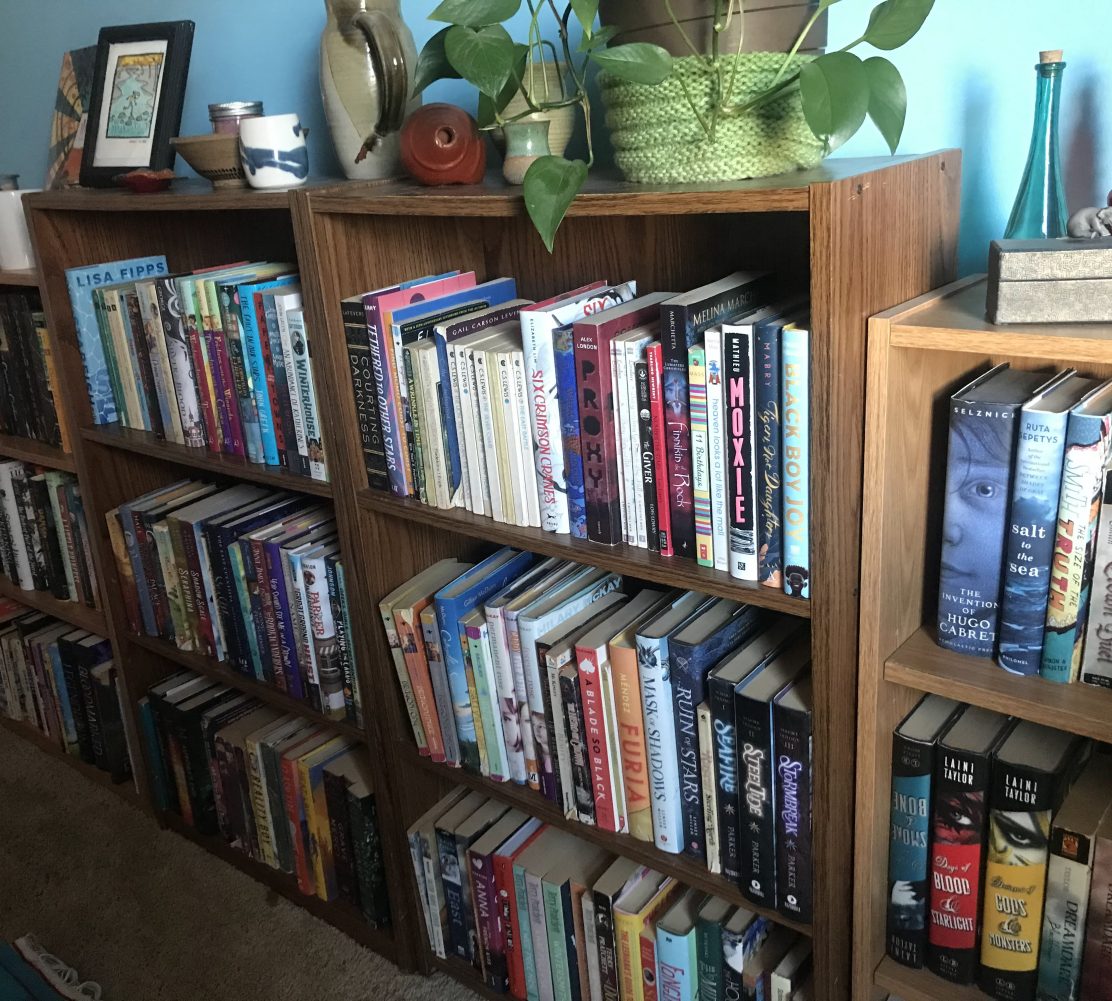by China Miéville
ages: 13+
First sentence: “This is the story of a bloodstained boy.”
Support your local independent bookstore: buy it there!
I first saw Railsea when it came into the store sometime in late April, early May. I checked our distributor to see where I should shelve it, and they said it was middle grade, ages 9-11. So, I stuck it there, and didn’t really think of it again. Then Cybils time came around, and it got nominated in the YA category. I thought that was a bit odd, so I figured I needed to read it. I put it on hold at the library, and when I got it, I noticed something weird: it was labeled as Adult sci-fi.
All of this is a roundabout way of me saying that I mostly picked up this one because I was fundamentally curious as to the target age group: where does it belong?
And after reading it, my answer would have to be… Yes. All of the above.
It is, briefly, a post-apocolyptic/dystopian retelling of Moby Dick with trains and mutant rodents instead of boats and whales. Our main character is a boy of indeterminate age, Sham Yes ap Soorap, who signs on to the moletrain — kind of like a whaling boat: it’s a train that rides the complex “sea” of rails, hunting the mutant moles for meat and skin to sell — as a doctor’s assistant. Their captain, Captain Naphi, has a “philosophy”: she lost an arm to a huge white mole rat, Mocker-Jack, and is determined to hunt it down. But, that’s not all: they find a wreck of a train, with an unusual picture on a digital camera: of a single rail line headed into the horizon. Sham heads on his own personal mission (or “philosophy”) to hunt down the owner of the camera, which turns out belongs to the children of a couple of adventurers. It turns out that the government, loosely speaking, is after these children because their parents discovered something they shouldn’t have: the path to Heaven.
Yes, this is all really convoluted. It’s not just you.
There is nothing in this book that a 9-year-old couldn’t read. I’m not sure they’d “get” it though. It’s very stylized (Miéville loves to use ampersands, even when they start sentences. & that’s very distracting.), and I came to realize through the course of the book that the more you know Moby Dick, the better this one is. It’s quite the faithful retelling, I think. (I’ve never read it, though I know enough about it to get the gist of what Miéville was trying to do). So, I’d give it to a teen or adult whose interested in dystopian who has also read Moby Dick. They’ll be better equipped to understand Railsea.
Was it good? I’m not sure. I was impressed with the feat Miéville was undertaking more than I enjoyed the story. I respected this one, but I don’t think I liked it very much. So, take that for what it’s worth.
At any rate, I’ve read it now, so I can begin to figure out where it belongs.


I want to give this a read at some point, but hasn't happened yet… Be interested to see what I think.
LikeLike
We can never obtain peace in the outer world until we make peace with ourselves.
Flights to Lilongwe | Cheap Flights to Lilongwe | Cheap Air Tickets to Lilongwe
LikeLike